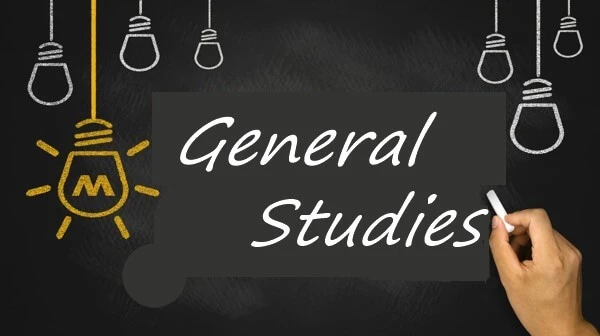Electronic Configuration Books
Author: SL Kakani
School: Federal University of Technology, Owerri
Department: Engineering
Course Code: ENG207, ENG208
Topics: Atomic Structure, Electronic Configuration, Crystal Geometry, Crystal Structure, Crystal Defects, bond, electron theory, Photoelectric Effect, diffusion, mechanical test, alloy, phase diagram, phase transformation, heat treatment, deformation, oxidation, corrosion, thermal properties, optical properties, electrical properties, magnetic properties, semiconductors, superconductivity, polymers, elastomers, organic materials, composites, nanostructure, spintronics, crystal, whiskers, unit cell, Co-ordination Number, crystal Imperfections, Anisotropy, Frank-Read Source, Crystal Growth, bond, Drude-Lorentz Theory, Metallic Bonding, . Fermi-Dirac, Sommerfield Free-Electron Theory, Brillouin Zones, Energy Bands, Resistivity, Conductivity, Thermoelectricity, Einstein’s Photoelectric Equation, Photoelectric Cell, Fick’s Laws, Surface Diffusion, Atomic Model, Mechanical Tests, Hume-Rothery’s Rules, Lever Rule, Annealing, Mass Effect, Pyrometers, Elastic Deformation, Plastic Deformation, Twinning, Work Hardening, Strain Hardening, Season Cracking
Author: CHE UI
School: University of Ibadan
Department: Science and Technology
Course Code: CHE126
Topics: Transition elements, Electronic configuration, Atomic radii, Magnetism, Manganese oxides, Manganese hydroxides
Author: CHE UI
School: University of Ibadan
Department: Science and Technology
Course Code: CHE126
Topics: atomic shells, orbital shapes, sub orbitals, spin quantum number, atom electronic configuration, Alkali metals, Alkaline earth metals, carbon group, catenation, metallic character, electronegativity, hybridization, inorganic stereochemistry, metal elements, Down's process
General inorganic chemistry lecture note
Author: Sampor
School: University of Ilorin
Department: Science and Technology
Course Code: CHM132
Topics: Periodic table, electronic configuration, Lewis structure, resonance structure, electron pair
Author: Robert thornton morrison, Robert Neilson Boyd
School: University of Ibadan
Department: Science and Technology
Course Code: CHE276
Topics: Organic Chemistry, chemical bond, quantum mechanics, atomic orbitals, electronic configuration, Pauli exclusion principle, molecular orbitals, covalent bond, hybrid orbitals, intramolecular forces, bond dissociation energy, homolysis, heterolysis, bonds polarity, melting point, intermolecular force, boiling point, solubility, acids, bases, isomerism, activation energy, hydrocarbons, methane structure, oxidation, heat of combustion, chlorination control, relative reactivity, reaction mechanisms, chlorination, free radicals, chain reactions inhibitors, transition state, molecular formula, chlorofluorocarbons, qualitative elemental analysis, quantitative elemental analysis, Alkene, free-radical substitution, ethane structure, Higher alkanes, alkyl groups, industrial source, Grignard reagent, halogenation, free radical stability, combustion, greenhouse effect, pyrolysis, cracking, alkane analysis, stereochemistry, stereoisomers, isomer number, tetrahedral carbon, optical activity, plane-polarized light, polarimeter, specific rotation, enantiomerism, chirality, chiral center, enantiomers, racemic modification, Diastereomers, meso structures, conformational isomers, optical purity, Alkyl halides, Nucleophilic aliphatic substitution, homolytic chemistry, heterolytic chemistry, Carbocations, Carbocations structure, alkyl halides analysis, alcohols, ethers, alcohol nomenclature, carbohydrates fermentation, Ethanol, alcohol preparation, alcohol reaction, alcohol oxidation, ethers preparation, Secondary Bonding, carbon-carbon double bond, Unsaturated hydrocarbon, ethylene structure, Propylene, Hybridization, orbital size, butylene, Geometric isomerism, alcohol dehydration, alkene reaction, hydrogen bromide addition, Hydrogenation, Electrophilic addition, Oxymercuration-demercuration, Hydroboration-oxidation, Alkene Free-radical polymerization, allylic Nucleophilic substitution, dienes, isoprene, isoprene rule, acetylene, Cyclic Aliphatic Compounds, cyclic compound stereoisomerism, cyclic ether, crown ethers, aromaticity, Benzene, aliphatic compounds, aromatic compounds, benzene structure, Kekule structure, Benzene ring, aromatic character, polynuclear aromatic hydrocarbons, Naphthalene, Quantitative elemental analysis, Electrophilic Aromatic Substitution, Friedel-Crafts alkylation mechanism, naphthalene electrophilic substitution, Aromatic-Aliphatic Compounds, Arenes, Spectroscopy, mass spectrum, electromagnetic spectrum, nuclear magnetic resonance spectrum, coupling consonants, chemical shift, aldehydes, ketones, Cannizaro reaction, Grignard reagents addition, Tetrahydropyranyl ethers, Iodoform test, Carboxylic Acids, Grignard synthesis, Dicarboxylic acids, acid chlorides, acid anhydrides, amides, esters, Transesterification, Aldol condensation, Wittig reaction, Crossed Claisen condensation, halides, ammonolysis, amide Hofmann degradation, Heterocyclic amines
Basic Principles of Inorganic Chemistry Continuous assessment filler
Author: Onuigbo Christian Ebube
School: University of Nigeria, Nsukka
Department: Science and Technology
Course Code: CHM101
Topics: Inorganic Chemistry, stoichiometry, mole concept, atomic mass, atomic structure, electron configuration, periodic classification, electronic theory of valence, representative elements, radioactivity
Basic Principles of Inorganic Chemistry Lecture note
Author: CHM101
School: University of Nigeria, Nsukka
Department: Science and Technology
Course Code: CHM101
Topics: Inorganic Chemistry, atomic structure, quantum theory, electromagnetic radiation, light waves, quantum theory of light, photoelectric effect, Einstein's electromagnetic theory, atomic spectra, Bohr's atomic theory, Bohr's postulates, Bohr's assumptions, Bohr's theory, wave mechanics, Quantum numbers, Schroedinger ideas, electronic configuration, Pauli's exclusion principle, Aufbau process, atomic radius, ionization energy, electron affinity, hydrogen, nitrogen, oxygen, phosphorus, sulphur, chlorine, bromine, iodine, sodium, calcium, aluminum, iron, manganese, copper, zinc, nuclear chemistry, radioactivity, nuclear stability, radioactive decay, radioactive nuclide, carbon-14 dating, nuclear transformation, nuclear reactor, nuclear reaction, nuclear fission, atomic bomb, nuclear fussion, hydrogen bomb
Author: Gyuk Musa
School: National Open University of Nigeria
Department: Science and Technology
Course Code: PHY202
Topics: atomic structure, atomic models, charge quantization, mass spectra, Bohr’s model of an atom, Hydrogen Spectra, electronic configuration, Magnetic Moment, Magnetic Dipole Moment, Electron Spin, Pauli’s Exclusive Principle, X – Spectra, Wave–Particle Duality, Radioactivity, binding energy of nuclei, Nuclear Structure, Nuclear Stability, Radioactivity, Radioactive series, Accelerators, detectors
Model textbook of chemistry for senior secondary schools, 3rd edition
Author: Okoye Ebelechukwu Ifeoma
School: WAEC, JAMB & POST UTME
Department:
Course Code: SSCE, WAEC, JAMB, POST UME
Topics: scientific method, hypothesis, chemical industries, matter, atom, molecule, ion, neutral atom, atomicity, Dalton‘s atomic theory, atomic structure, atomic number, mass number, isotopy, valency, binary compounds, chemical combination, periodic table, electronic configuration, noble gases, Relative atomic mass, Relative molecular mass, chemical bonding, Electrovalent bonding, covalent bonding, Co-ordinate covalent bonding, Metallic bonding, hydrogen bonding, Vander Waal forces, Gas Laws, Boyle‘s law, Charles law, Avogadro's law, Separation Techniques, filtration, decantation, acid, bases, salts, alkali, water, carbon, diamond graphite, Chemical Reactions, Reactants, decomposition reaction, Acid-Base Reaction, Volumetric analysis, reagents, water, air, oxygen, halogen, nitrogen, Sulphur, Oxidation Reduction Reaction, redox reaction, oxidizing agent, reducing agent, ionic theory, Electrovalent Compounds, Covalent Compounds, Electrolysis, Electrochemical cells, organic chemistry, isomerism, alkanols, Quantitative Analysis, Qualitative Analysis, Acid-base titration, Redox titrations, Petroleum, metals, fats, oil, starch, Giant Molecules, sugar, protein, nuclear chemistry, Nuclear Reactions
JAMB series remix on chemistry
Author: Samuel Adedara Olaosebikan
School: WAEC, JAMB & POST UTME
Department:
Course Code: JAMB
Topics: chemistry, Matter, chemical formula, chemical equations, laws of chemical reaction, atomic structure, electronic configuration, periodicity, chemical bonding, gas laws, kinetic theory of matter, air, air composition, environmental pollution, water, solutions, solubility, acid, bases, salts, salt hydrolysis, stoichiometry, quantitative analysis, qualitative analysis, oxidation reaction, reduction reaction, electrolytes, electrolysis, electrochemical cells, rate of chemical reactions, chemical equilibrium, equilibrium constant, nuclear chemistry, radioactivity, nuclear reaction, hydrogen, oxygen, carbon, phosphorus, chlorine, nitrogen, Sulphur, silicon, metals, organic chemistry
Departments

Administration, Social and Management science

Agriculture and Veterinary Medicine

Arts and Humanities

Education

Engineering

General studies

Law

Medical, Pharmaceutical and Health science

Science and Technology